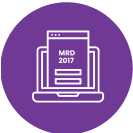ISO 13485 Medical Devices Certification Assistance in India

ISO 13485 Medical Devices Certification is a comprehensive framework for manufacturers, importers, and distributors that maintain the quality of medical devices' regulatory compliance. Contact CliniExperts to get Medical Devices ISO 13485 Certification Assistance and stay ahead of the competition by assuring utmost safety and efficacy.
ISO 13485 Medical Devices Certification Assistance – Overview
ISO 13485 Certification provides a comprehensive framework for medical device designers, manufacturers, suppliers, service providers, and distributors to assure quality, safety, and regulatory compliance. ISO 13485 is a distinctive QMS (Quality Management System) standard evolved from the globally recognized standard - ISO 9000.
ISO 13485 Certification implies that a company has met all the requirements and has effectively implemented an ISO 13485 QMS focusing on the efficacy and safety of medical devices. The certification follows the PDCA framework wherein the applicant must establish and implement quality management in accordance with the ISO 13485 standard. Following the implementation of the QMS, the applicant needs to approach an accredited notified body for the audit of the organization. The accredited notified body performs an audit to assure that the firm can continuously meet and sustain quality standards and issue the certification.
Usually, it takes around 6-9 months to complete the ISO certification process.

Who Can Apply?
Designers, Manufacturers, Suppliers and Service providers and Distributors of Medical devices can apply for ISO-13485 certification.

How To Apply?
The Applicant must follow the following process:
-

Define the scope of the ISO 13485 Certificate Initially, it is necessary to envision the objectives of your organization and the scope for the certification.
-

Select notified body
-

Establish QMS and prepare necessary documents.
-

Implement the PDCA cycle and work in accordance with your QMS.
-

Prepare and optimize audit
-

Conduct Internal and pre-assessment audit
-

Proceed for a certification audit by a notified body. The notified body will audit your company for two to ten (or even more) days depending on the size of your organization. Finally, the notified body will issue the certificate(s) if the organization passes the audit successfully.
Important Documents

The general documentation requirement for ISO 13485 certifications are as follows:
- Quality Management System manual
- Medical devices file
- Document control procedures
- Mandatory procedure for training
- Requirements and procedure for design and development of medical device
- Responsibility and authorities procedures and records
Timeline to get from Central Drugs Standard Control Organisation
6 to 9
MONTHSEssential Tips
- It is essential to establish a clear QMS before the certification audit.
- Every stakeholder must be trained to understand the ISO 13485 standard and compliance requirements.
- Internal audit must be performed before the external audit to ensure compliance and correct any deviations if noted.
- A few of the significant roadblocks to keep in mind are inadequate and unqualified resources and insufficient records.
- A culture of compliant attitude is often the biggest roadblock in procuring the license and must be avoided or corrected before you go for an audit.
Expert Advise
After the internal audit, the management should perform a pre-assessment review of the quality management system to meet the necessary requirements.
The organization's team should be well trained and work according to SOPs.
Ensure that computerized systems too have been adequately checked and validated.
Ensure that external suppliers have also been audited.
Related Services
Import License for Medical Devices in India
Importer | Regulatory Body: CDSCO
Meet all your Regulatory Compliance needs. CliniExperts' professionals help you plan and streamline regulatory approval processes.
Non-Notified Medical Devices Registration/ Approval in India
Importer | Regulatory Body: CDSCO
CliniExperts acts as an authorized representative to help you in getting the permission to import non-notified medical devices in India. Register your Non-notified Medical Devices in India with CliniExperts' professional assistance
Frequently Asked Questions
Does ISO 13485:2016 compliance reflect GMP?
No, GMP and ISO 13485:2016 are separate requirements. GMPs are a legally mandated regulatory obligation whereas ISO is a voluntary certification that an organization can obtain to demonstrate that its processes adhere to certain standards.

What is the significance of ISO 13485?
ISO 13485 implements QMS with a higher level of control. It focuses on safety and stringent regulations that ensure medical devices' quality and safety

I already have a certificate from ISO 9001. Is it sufficient?
No. An ISO 13485 certification is mandatory to comply with regulatory requirements if you require a certified QMS (see question 1)

What is the current ISO 13485 version?
The most recent revision of ISO 13485 for medical device QMS was released in March 2016.

Is ISO 13485:2016 applicable exclusively to medical devices?
ISO 13485 was designed primarily for organizations engaged in the medical device industry.

Are there any ISO 13485 testing requirements?
There are no testing requirements, but there are some minimum standard requirements that must be met.

